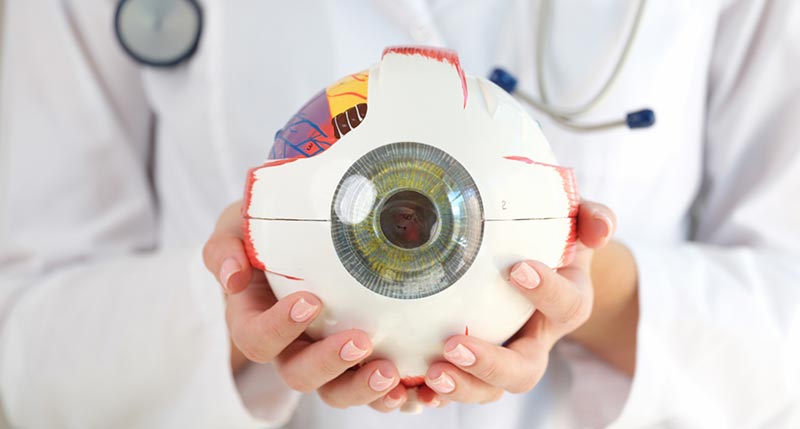Discover Andalusia's Finest Cardiologist Clinics and Services
Discover Andalusia's Finest Cardiologist Clinics and Services
Blog Article
The Pros and Cons of Different Refractive Surgeries for Enhanced Eyecare

LASIK Surgical Treatment
LASIK surgical procedure is a typically carried out refractive treatment that aims to remedy vision issues such as farsightedness, astigmatism, and nearsightedness. During the treatment, a thin flap is developed on the cornea, and a laser is used to improve the underlying tissue, dealing with the refractive error.
Among the key benefits of LASIK surgical procedure is the fast improvement in vision experienced by lots of individuals. Many individuals discover a considerable improvement in their vision quickly after the procedure, with minimal downtime needed for healing. Additionally, LASIK is understood for its high success price and low incidence of complications when executed by experienced surgeons. Nevertheless, like any kind of surgery, LASIK likewise carries some dangers, including completely dry eyes, glow, halos, and under or overcorrection of vision. It is necessary for individuals thinking about LASIK surgery to undergo a complete examination by an eye care specialist to determine if they are appropriate prospects for the treatment.
PRK Procedure
The PRK treatment, likewise understood as Photorefractive Keratectomy, is a sort of refractive surgical treatment that intends to remedy vision problems similar to LASIK surgical procedure. Unlike LASIK, which entails creating a flap in the cornea, PRK services the surface layer of the cornea. Throughout the PRK procedure, the external layer of the cornea, called the epithelium, is eliminated to permit improving of the underlying corneal cells with an excimer laser. This improving assists to remedy refractive mistakes such as nearsightedness, astigmatism, and farsightedness.
One of the benefits of PRK over LASIK is that it gets rid of the threat of flap-related problems since no flap is developed during the surgery. Despite the longer healing period, PRK can be an ideal option for people seeking vision correction surgical treatment.
SMILE Surgery
An advanced refractive surgery strategy gaining popularity in the field of ophthalmology is SMILE Surgical treatment. Tiny Cut Lenticule Extraction (SMILE) is a minimally intrusive procedure that remedies vision by improving the cornea utilizing a femtosecond laser. Unlike standard LASIK surgical procedure, SMILE Surgical treatment entails creating a little laceration in the cornea to remove a lenticule, which results in less disturbance to the corneal framework and potentially quicker recovery times.
Among the primary benefits of SMILE Surgery is its ability to deal with myopia (nearsightedness) and astigmatism with high accuracy, causing superb aesthetic outcomes for people. The minimally intrusive nature of the treatment additionally decreases the threat of company website issues such as completely dry eye disorder, making it a positive alternative for individuals looking for refractive surgical procedure.

LASEK Method
Having explored the benefits and considerations of SMILE Surgical treatment, an additional notable refractive surgical treatment technique worth examining is the LASEK Technique. LASEK, which represents Laser-Assisted Subepithelial Keratectomy, is a kind of laser eye surgery that intends to correct refractive mistakes such as nearsightedness (nearsightedness), hyperopia (farsightedness), and astigmatism.
Unlike LASIK, LASEK does not entail developing a corneal flap. Instead, during a LASEK procedure, the doctor makes use of a watered down alcohol option to loosen the slim outer layer of the cornea, known as the epithelium. This layer is after that delicately relocated aside to allow the laser to reshape the underlying corneal tissue. Once the cornea has been reshaped to the wanted degree, the epithelial layer is repositioned.
Among the primary benefits of LASEK is that it can be suitable for people with thin corneas who might not be excellent candidates for LASIK. Furthermore, LASEK generally leads to minimal post-operative check that pain and a quicker recovery time contrasted to PRK. The visual healing procedure with LASEK may be a little longer than with LASIK.
Implantable Contact Lenses
Implantable Contact Lenses provide a long-term vision adjustment option for people seeking an option to standard get in touch with lenses or glasses. These lenses, additionally referred to as phakic intraocular lenses, are surgically put right into the eye to fix refractive mistakes such as myopia (nearsightedness), hyperopia (farsightedness), and astigmatism. cardiologist andalusia. Unlike conventional contact lenses that remain on the surface of the eye, implantable get in touch with lenses work within the eye itself, supplying clear vision without the requirement for day-to-day upkeep or elimination
Among the crucial advantages of implantable call lenses is their permanence. As soon as put, they can continue to be in the eye indefinitely, providing steady and regular vision modification. Additionally, these lenses can be an outstanding option for people who are not good prospects for laser eye surgical treatment or that favor a reversible vision modification procedure.
However, implantable contact lenses do carry some threats, consisting of the possibility for cataracts or increased eye pressure. It is crucial for people considering this option to seek advice from an eye treatment expert to establish if implantable get in touch with lenses are the best option for their details requirements and eye wellness.
Conclusion
In verdict, each type of refractive surgery has its very own benefits and downsides. LASIK surgical treatment is popular for its quick healing time, while PRK treatment may be suitable for individuals with thin corneas.

Overall, SMILE Surgical treatment provides a promising choice for people looking to enhance their vision with refractive surgical procedure.
Report this page